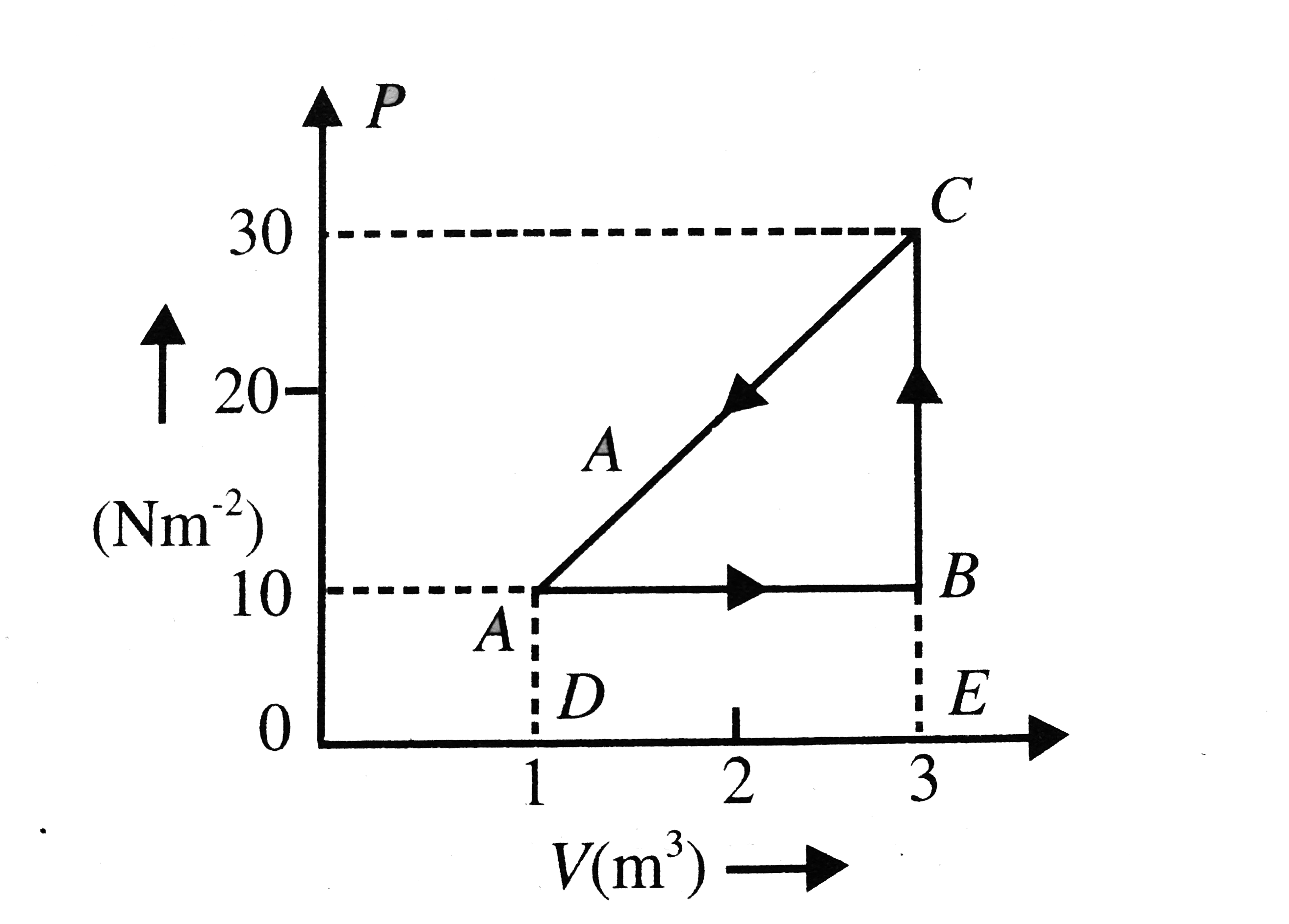In a given process work done on a gas is 40 J and increase in its internal energy is 10J. Find heat given or taken to/from the gas in this process.
The correct Answer is:C
To solve the problem, we will use the first law of thermodynamics, which is given by the equation:
ΔQ=ΔU+ΔW
Where:
- ΔQ is the heat added to the system.
- ΔU is the change in internal energy.
- ΔW is the work done on the system.
1. Identify the given values:
- Work done on the gas, ΔW=−40J (since work is done on the gas, we take it as negative).
- Increase in internal energy, ΔU=10J.
2. Apply the first law of thermodynamics:
ΔQ=ΔU+ΔW
3. Substitute the known values into the equation:
ΔQ=10J+(−40J)
4. Calculate ΔQ:
ΔQ=10J−40J=−30J
5. Interpret the result:
The negative sign indicates that heat is taken from the gas.
Final Answer:
The heat given or taken from the gas in this process is −30J, which means that 30 J of heat is taken from the gas.
- ΔQ is the heat added to the system.
- ΔU is the change in internal energy.
- ΔW is the work done on the system.
- Work done on the gas, ΔW=−40J (since work is done on the gas, we take it as negative).
- Increase in internal energy, ΔU=10J.
ΔQ=ΔU+ΔW
ΔQ=10J+(−40J)
ΔQ=10J−40J=−30J
The negative sign indicates that heat is taken from the gas.
The heat given or taken from the gas in this process is −30J, which means that 30 J of heat is taken from the gas.
Topper's Solved these Questions
- LAWS OF THERMODYNAMICSBOOK - DC PANDEY ENGLISHCHAPTER - LAWS OF THERMODYNAMICSEXERCISE - Example Type 1
2 Videos
- LAWS OF THERMODYNAMICSBOOK - DC PANDEY ENGLISHCHAPTER - LAWS OF THERMODYNAMICSEXERCISE - Example Type 2
1 Video
- LAWS OF MOTIONBOOK - DC PANDEY ENGLISHCHAPTER - LAWS OF MOTIONEXERCISE - Medical entrances gallery
39 Videos
- MAGNETIC EFFECT OF CURRENT AND MAGNETISMBOOK - DC PANDEY ENGLISHCHAPTER - MAGNETIC EFFECT OF CURRENT AND MAGNETISMEXERCISE - Integer type Questions
10 Videos
Similar Questions
Heat taken from a gas in a process is 80 J and increase in internal energy of the gas is 20J. Find work done by the gas in the given process.
View SolutionAn ideal monoactomic gas undergoes a process ini which its internal energy depends upon its volume as
U=a√V [where a is a constant]
(a) find work done by a gas and heat transferred to gas to increse its internal energy by 200 J.
(b) find molar specific heat of gas for this process.
View SolutionAn ideal diatomic gas (γ=75) undergoes a process in which its internal energy relates to the volume as U=α√V, where α is a constant.
(a) Find the work performed by the gas to increase its internal energy by 100J.
(b) Find the molar specific heat of the gas.
View SolutionA diatomic gas done 80J work when expanded isobarically. Find the heat given to the gas during this process?
View SolutionWork done by a gas in a given process is −20J. Heat given to the gas is 60J. Find change in internal energy of the gas.
View SolutionIn a isobaric process the work done by a di-atomic gas is 10 J , the heat given to the gas will be :
View SolutionA monatomic ideal gas sample is given heat Q. One half of this heat is used as work done by the gas and rest is used for increasing its internal energy. The equation of process in terms of volume and temperature is
View SolutionAn ideal gas with adiabatic exponent (γ=1.5) undergoes a process in which work done by the gas is same as increase in internal energy of the gas. Here R is gas constant. The molar heat capacity C of gas for the process is:
View SolutionA diatomic gas (γ=1.4) does 200 J of work when it is expanded isobarically. Find the heat given to the gas in the process.
View SolutionAn ideal gas is taken round a cyclic thermodynamic process ABCA as shown if Fig. If the internal energy of the gas at point A is assumed zero while at B it is 50 J. The heat absorbed by the gas in the process BC is 90 J.
(a) What is the internal energy og the gas at point C ?
(b) How much heat energy is absorbed by the gas in the process AB?
(c ) Find the heat energy rejected or absorbed by the gas in the process CA.
(d) What is the net work done by the gas in the complete cycle ABCA ?

View Solution
